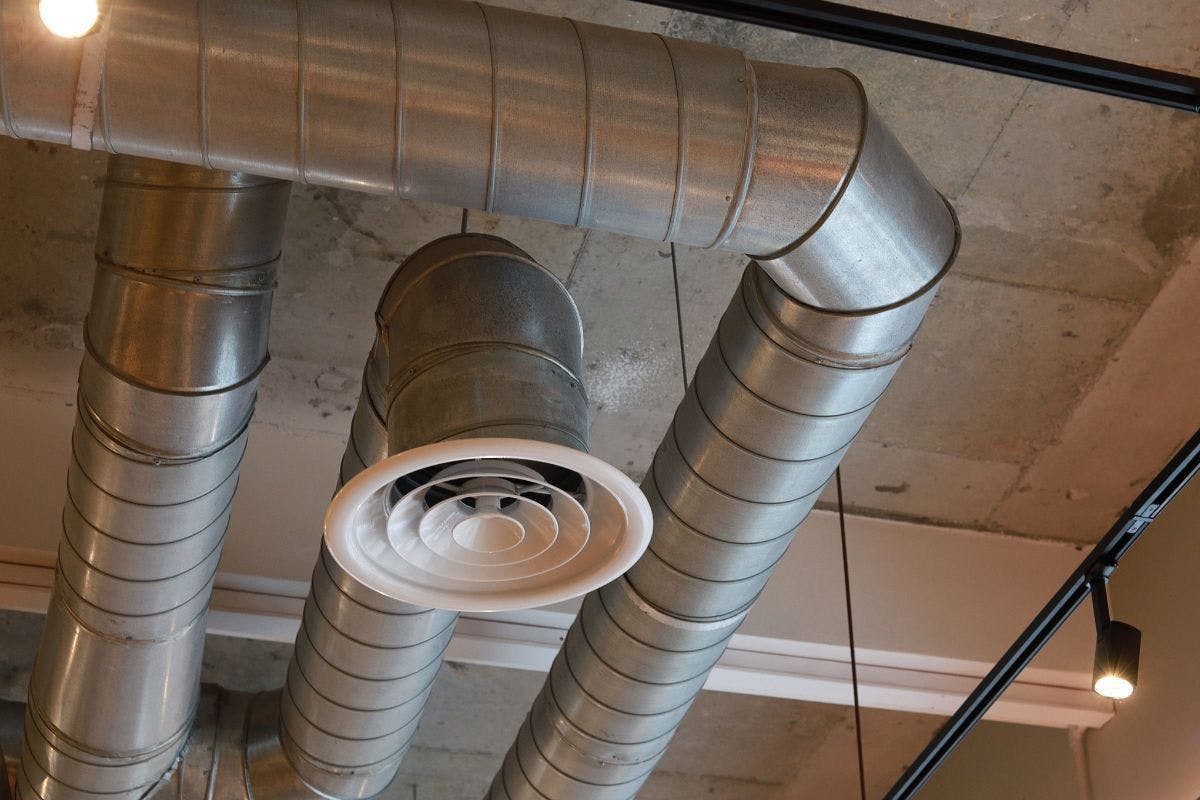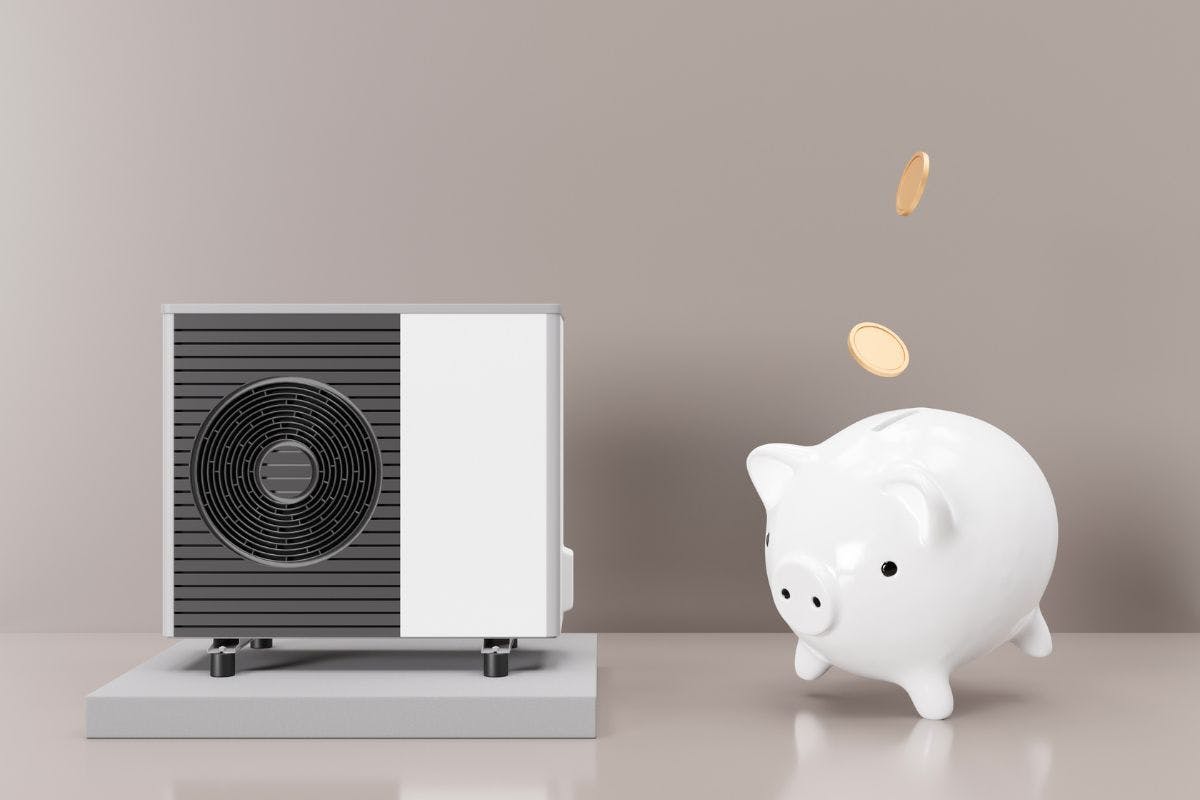Air Sealing Your Home for Energy Efficiency: Benefits and How To
Actualizado

Autor
Andrew Giermak
Writer and Editor

Editor
Andrew Blok
Writer and Editor

You know your home’s not supposed to have leaks and drafts. And, for some reason, the room with the door into the attic is always colder in the winter and hotter in the summer. What can you do about it?
Actually, there are probably a few things you can do yourself, even if air sealing your whole home might require professional expertise. Air sealing leaks and cracks in your home can save you energy and money. Here’s help with what to look for and how to get started on home air sealing.
See how much you can save with home energy changes
What Is Air Sealing?
Air sealing is sealing up your home’s envelope, everything in a home’s structure separating interior from exterior. From attics, crawl spaces, and foundations to front doors and garages, sealing as many of the gaps, cracks, leaks, spaces, and nooks as possible makes your home more energy efficient. Keeping conditioned air from escaping outside takes the burden off your HVAC system and keeps you more comfortable.
Air sealing can be done professionally, and may be required to seal air leaks depending on a home’s age, surrounding environment, and more. There are plenty of DIY tasks that can improve your home’s air sealing, too. Adding insulation in the attic, or adding caulking and weatherstripping where needed around windows and doors are common air sealing projects.
Improved sealing can give your home better, healthier air quality, as you keep more dust, pollen, smoke, odors, and moisture out. It can help with draftiness and stop letting warm air in in the summer and warm air out in the winter. It can be an energy and money saver, too. Energy Star estimates homeowners can save about 11% of their total energy costs with the recommended level of sealing and insulation.
Benefits of Air Sealing
Improved air sealing your home can save you money immediately and in the long run, make your home more comfortable, and even have important health benefits.
Saving energy and money: Better airflow in your home, and keeping it in your home as designed, means less energy used and money spent on heating and cooling, so you can see lower bills right away. Over time, if your HVAC system runs less often, it may need fewer repairs and last longer, saving you even more money.
Comfort: Improved air sealing will give you better, more consistent temperature and humidity control in your home. By stopping draftiness and air leaks, you’re helping keep all your rooms and floors feeling the same no matter the time of day or time of year.
Health: A leaky home envelope is more likely to let moisture (and therefore mold), pollen, dust, other allergens, smoke, and odors into your home. Cleaner indoor air can make anyone feel better and help people with asthma, allergies, sensitivities, or other health concerns.
See how much you can save with home energy changes
Detecting Air Leaks
Detecting air leaks can require hiring a professional. A technician can bring expertise, plus the tools and equipment needed to do a full energy assessment.
You can check your home, inside and out, with relatively simple visual checks. Here’s what energy.gov recommends checking inside your home.
- Electrical outlets
- Switch plates
- Door and window frames
- Electrical and gas service entrances
- Baseboards
- Weatherstripping around doors
- Fireplace dampers
- Attic hatches
- Wall- or window-mounted air conditioners
- Cable TV and phone lines
- Vents and fans
On the exterior of your home:
- Areas where two different building materials meet
- Exterior corners
- Outdoor water faucets
- Where siding and chimneys meet
- Where the foundation and exterior brick or siding meet
Source: Department of Energy
Air Sealing Techniques
Different types of leaks on different surfaces or areas of your home need different material and techniques to do the job right.
Caulking is a common leak sealer for many spots and surfaces. Caulk might be needed on windows and doors, where ducts, plumbing pipes, or where wires meet the wall, and joints where a wall meets the ceiling.
Weatherstripping is an answer for gaps or draftiness around doors and windows.
Insulation, such as adding batt or roll insulation or spraying in foam insulation, can be added to existing insulation that is too thin or has gaps or uninsulated locations.
More foam sealant products can be used to seal areas near windows or baseboards and foam gaskets can be useful for sealing cracks or spaces at outlets, vents, or plates.
Another sealing project, with a little more expense to it, but good long-term value, is installing new, energy-efficient windows.
If you’re interested in saving money by having a more energy-efficient home or having your own clean, renewable home energy, our team is here to help. You can start by going to our home energy advisor tool or our solar savings calculator.
See what home electrification can do for you:
Frequently Asked Questions
Can I air seal my own home?
Depending on your ability, there are probably some air sealing projects you can take on yourself. Adding caulk or weatherstripping around doors or windows and sealing cracks or openings around vents or power outlets can be good DIY tasks. Work with insulation may be better off for a professional technician.
How much does air sealing cost?
Cost may vary a lot depending on the scale of the project, whether you’re hiring a professional, and the material being used. Professional whole-house air sealing can cost $10,000 or more. Again, this depends on the size of the home and the extent of the job.
Will air sealing make my home stuffy or sick?
Your home is supposed to have some airflow and temperature movement. It is possible to overseal a home, but it is very rare. Sealing air leaks generally improves air quality and gives you cleaner air along with the right level of humidity.



